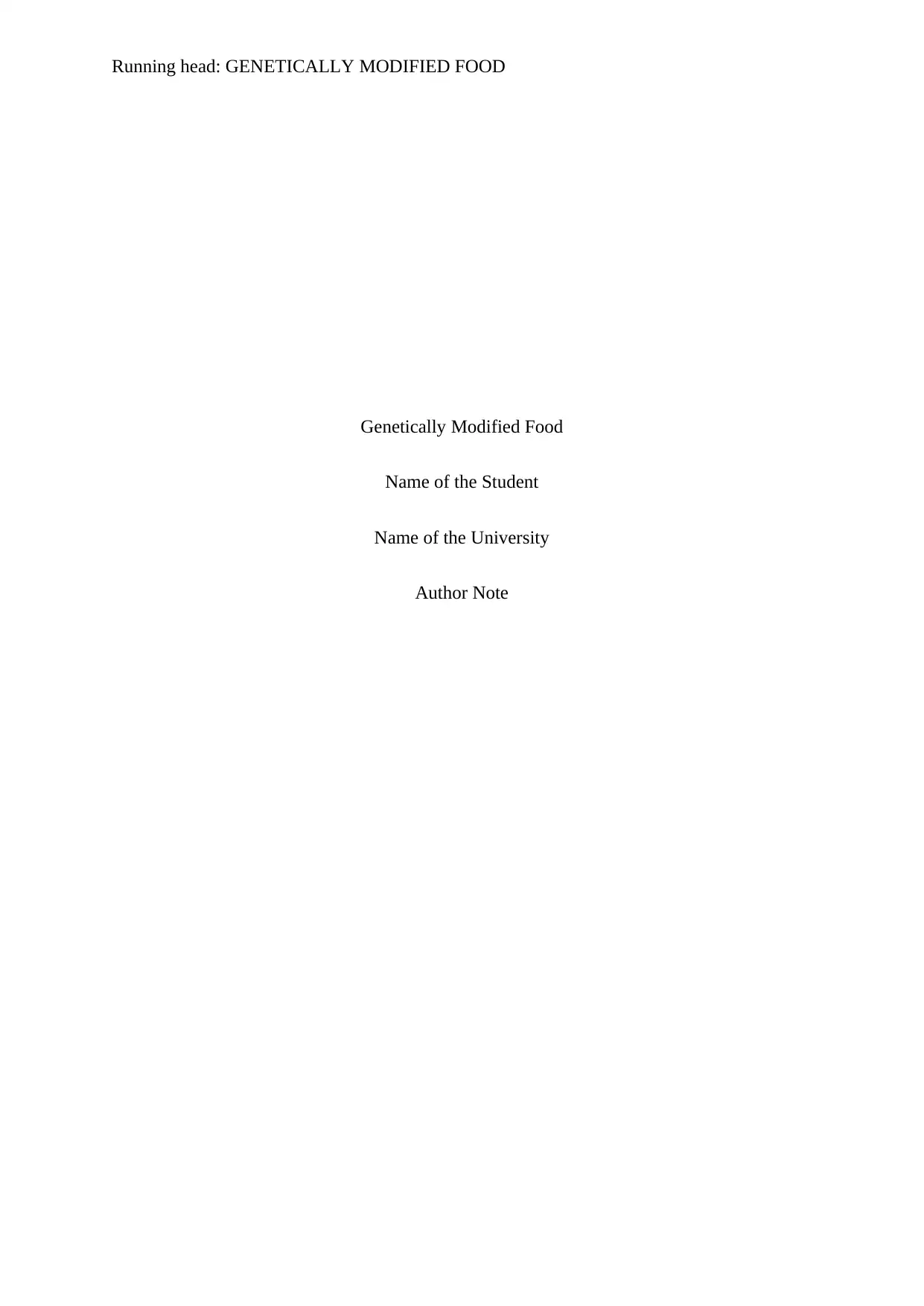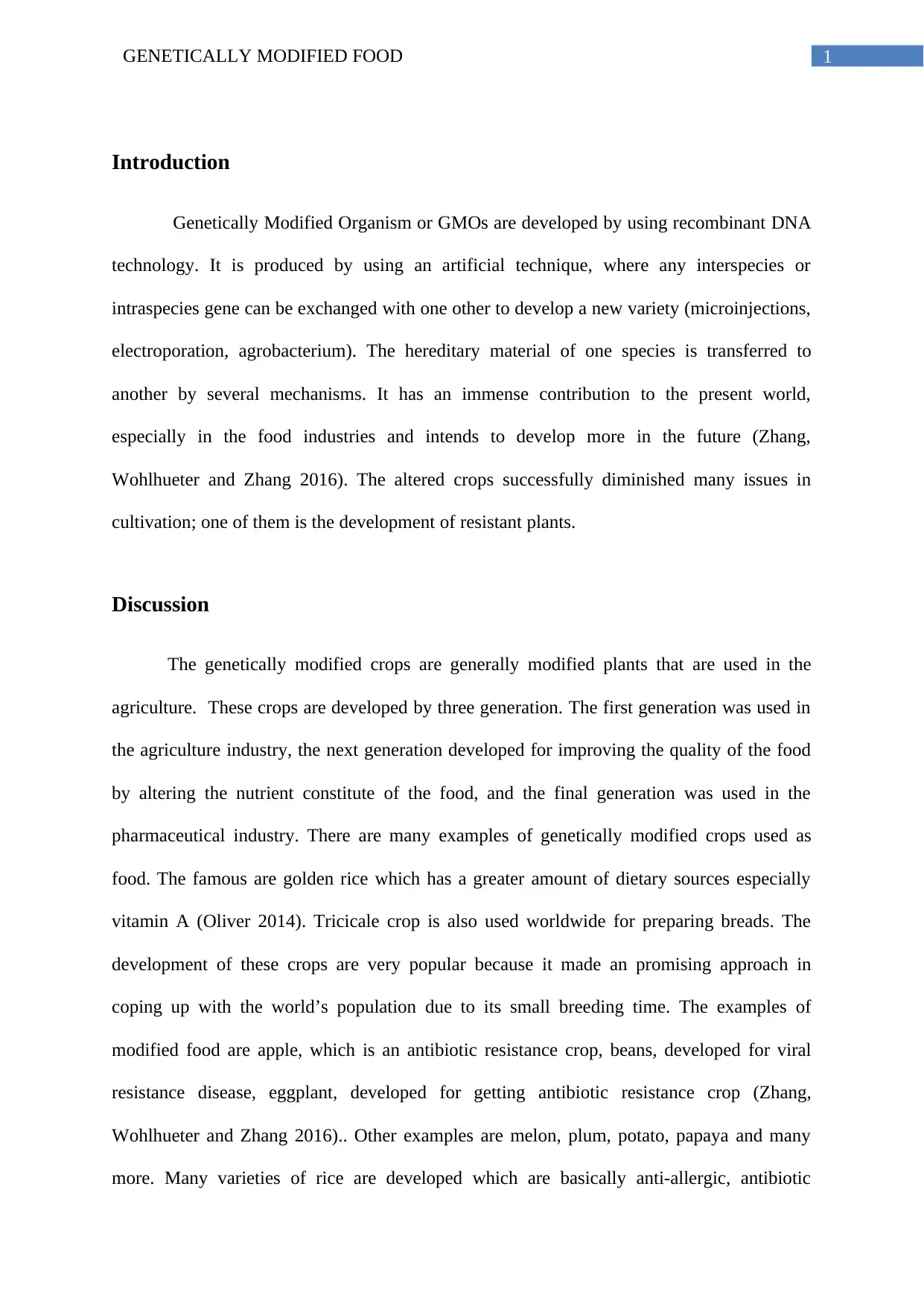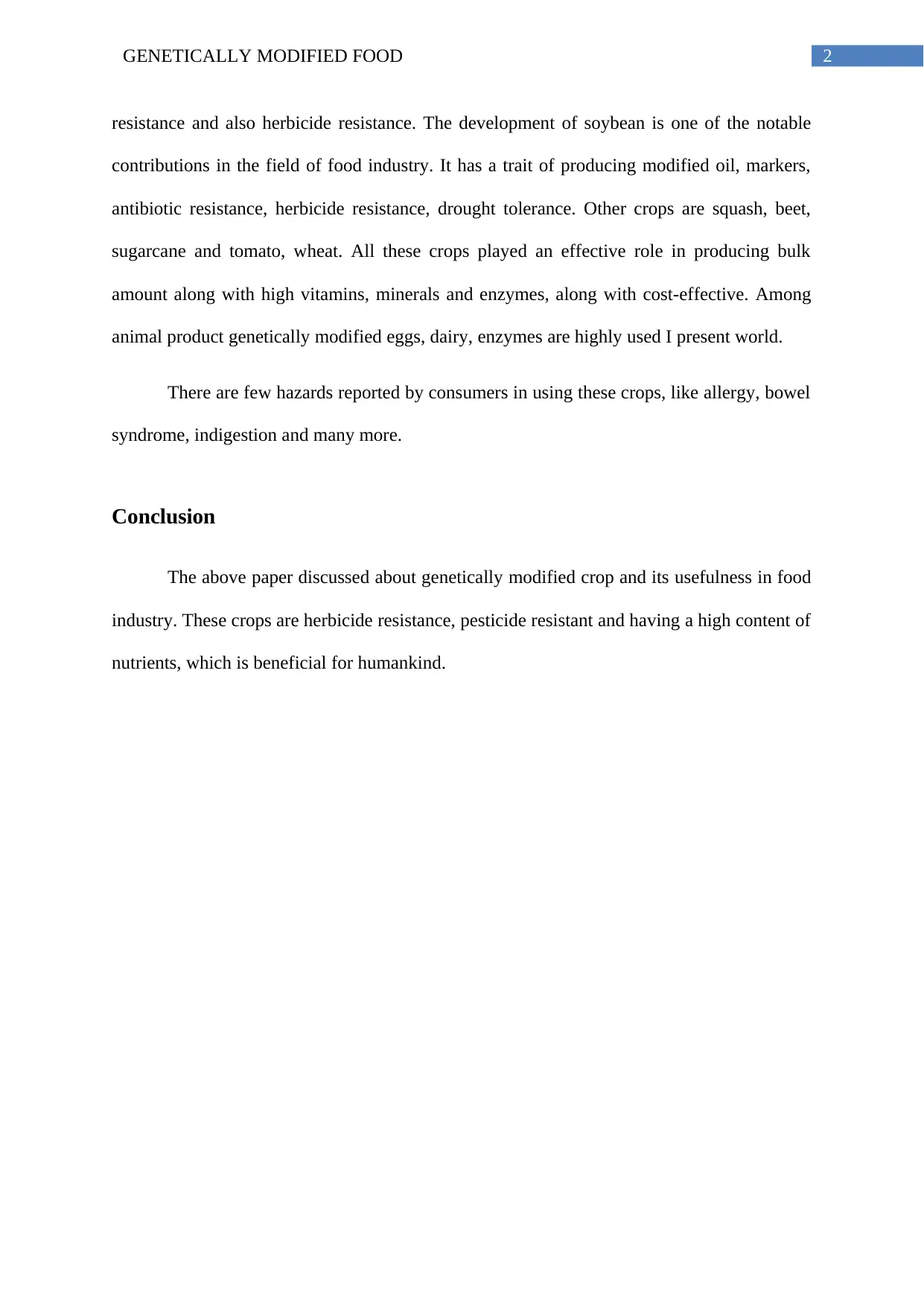A Comprehensive Report on Genetically Modified Foods
VerifiedAdded on 2022/08/19
|4
|568
|75
Report
AI Summary
This report delves into the realm of genetically modified foods (GMOs), examining their development through recombinant DNA technology. It highlights the advancements in agriculture, focusing on the creation of herbicide-resistant and pesticide-resistant crops. The report discusses the first, second and third generations of GMO crops, from the use in the agriculture industry to the development of foods with enhanced nutritional value, such as golden rice and various anti-allergic and antibiotic-resistant crops. It also provides examples of modified crops like apples, beans, and soybeans. The report further addresses the benefits of GMOs, like increased yields and enhanced nutritional content. Finally, it acknowledges the potential hazards associated with GMOs and their impact on human health, such as allergies and digestive issues. Overall, the report underscores the significance of GMOs in the food industry and their potential to address global food demands.
1 out of 4











![[object Object]](/_next/static/media/star-bottom.7253800d.svg)